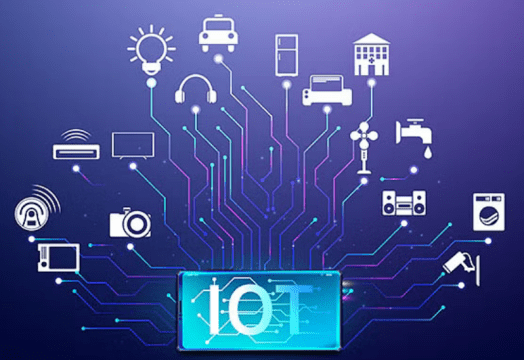IoT Level 2 in the Architecture: Bridging the Gap between Devices and Cloud – The internet of things (IoT) has completely transformed the way we interact with machines and devices, bringing about a new era of connectivity and convenience.
However, as IoT networks grow increasingly complex, managing, monitoring, and optimizing the flow of data has become an uphill battle for many businesses.
Enter IoT Level 2 – the game-changing solution that streamlines and simplifies data management in the IoT landscape. In this article, we’ll delve into the significance of IoT Level 2, how it works, and how it can benefit your business. Get ready to take your IoT game to the next level!

What is IoT Level 2?
As the world becomes more connected, the importance of IoT Level 2 cannot be overstated. This crucial layer of the IoT architecture is the key to unlocking the potential of the Internet of Things.
It provides a seamless and efficient way to manage the vast amounts of data generated by devices and sensors, ensuring that businesses can make sense of the information and use it to drive innovation and growth.
By serving as a bridge between the devices and the cloud, IoT Level 2 enables businesses to develop powerful and scalable IoT applications that are tailored to their specific needs. So if you’re looking to harness the power of the IoT, be sure to pay close attention to the benefits of IoT Level 2.
The Significance of IoT Level 2
The impact of IoT Level 2 cannot be overstated. This critical layer in the IoT architecture enables seamless communication between devices and the cloud, unlocking the potential of the internet of things.
By providing a standardized format for data exchange and device integration, IoT Level 2 empowers businesses to develop cutting-edge IoT applications that leverage the power of real-time data analytics.
With IoT Level 2, businesses can unlock new levels of efficiency, security, and cost savings that were once out of reach. Don’t miss out on the opportunity to transform your business with IoT Level 2.
How does IoT Level 2 work?
IoT Level 2 architecture consists of three main components: Edge devices, Edge compute, and Edge gateways.
Edge devices are really the unsung heroes of the field! They work tirelessly to collect data and perform critical tasks that keep everything running smoothly.
And you know what’s even more impressive? Edge compute is there to provide the necessary computing power to process and analyze that data right on the spot! That means no delays or lags, and no need to send data all the way to the cloud for processing.
But wait, it gets even better! Edge gateways act as the ultimate bridge between the edge devices and the cloud, providing a standardized interface for seamless data exchange and communication. It’s like they’re the ultimate matchmaker, connecting all the pieces of the puzzle together.
Honestly, I can’t imagine what the world would be like without these amazing edge devices, edge compute, and edge gateways. They’re truly the backbone of the modern digital age!
IoT Level 2 works by processing and filtering data at the edge, providing a standardized format that is easily consumed by the cloud.
This reduces the amount of data sent to the cloud, resulting in lower latency and improved response time. It also provides a secure and reliable method for data transfer and device management, improving the overall reliability of the IoT network and read about 20 Types of Technology in the World and Their Explanations
Benefits of IoT Level 2
The advent of IoT Level 2 has brought a plethora of benefits for businesses to revel in. The utilization of this advanced technology has the power to transform the way we operate, making our lives easier and more efficient.
So let’s dive into the exciting world of IoT Level 2, and discover all the incredible advantages that it has to offer!
1. Reduced Latency
IoT Level 2 reduces latency by processing and filtering data at the edge, resulting in faster response times.
2. Improved Security
IoT Level 2 provides a secure method for data transfer and device management, reducing the risk of cyber-attacks and data breaches.
3. Lower Cloud Computing Costs
IoT Level 2 reduces cloud computing costs by processing data at the edge, reducing the amount of data sent to the cloud.
4. Improved Reliability
IoT Level 2 provides a reliable method for data transfer and device management, improving the overall reliability of the IoT network.
Challenges of IoT Level 2
Despite its benefits, IoT Level 2 comes with several challenges, including:
1. Complexity
IoT Level 2 architecture is complex and requires specialized skills and knowledge to develop, deploy, and manage.
2. Standardization
The lack of standardization in IoT Level 2 can lead to compatibility issues between different devices and platforms.
3. Scalability
IoT Level 2 architecture needs to be scalable to support the growing number of IoT devices and sensors in the field.
Conclusion
IoT Level 2 is an essential component of the IoT architecture that bridges the gap between devices and the cloud. Providing a standardized and scalable solution for managing IoT data and device communications.
Its benefits, such as reduced latency, improved security, lower cloud computing costs, and improved reliability, make it an integral part of the IoT ecosystem.
Despite the challenges that come with IoT Level 2, the benefits far outweigh them. IoT Level 2 provides a reliable and secure method for managing IoT data, improving the overall performance and efficiency of IoT systems.
As technology advances and the number of IoT devices grows, IoT Level 2 will become increasingly important in managing and optimizing IoT networks.
In conclusion, IoT Level 2 is the missing piece in the puzzle that bridges the gap between devices and the cloud.
It provides a standardized and intelligent solution for managing and optimizing IoT data, making it easier to develop, deploy, and manage IoT applications. With IoT Level 2, the potential of IoT technology is truly limitless.
FAQs
- What is IoT Level 2?
IoT Level 2 refers to the middle layer in the IoT architecture that acts as a bridge between the devices and the cloud. Providing an intelligent and scalable solution for managing IoT data and device communications. - What are the benefits of IoT Level 2? IoT Level 2 provides several benefits, including reduced latency, improved security, lower cloud computing costs, and improved reliability.
- What are the challenges of IoT Level 2? The challenges of IoT Level 2 include complexity, lack of standardization, and scalability.
- How does IoT Level 2 work?
IoT Level 2 works by processing and filtering data at the edge. Providing a standardized format that is easily consumed by the cloud. It also provides a secure and reliable method for data transfer and device management. - Why is IoT Level 2 important?
IoT Level 2 is important because it bridges the gap between devices and the cloud. Providing a standardized and intelligent solution for managing IoT data and device communications. It improves the overall performance and efficiency of IoT systems, making it easier to develop, deploy, and manage IoT applications.




